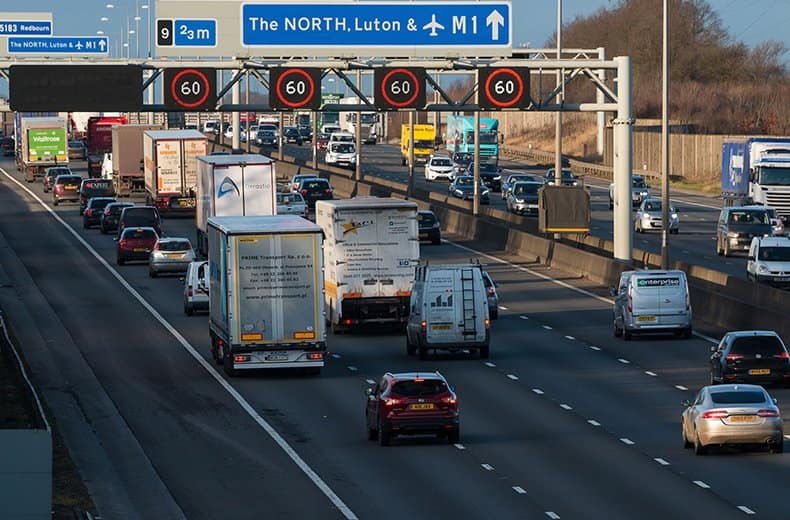

**Regulations on 20-Year-Old Vehicles: Are They Prohibited from Motorways?**
As environmental issues and road safety regulations evolve, numerous nations are reevaluating the impact of older vehicles on their roadways. A frequent inquiry among automobile owners and aficionados is whether 20-year-old vehicles face prohibition from motorways. The response, however, is not simple and largely hinges on the country, region, and specific laws in effect. This article examines the current regulatory environment influencing 20-year-old vehicles, especially regarding motorway access.
—
### Grasping the Issue
Vehicles that are 20 years old or more generally lack the advanced emissions controls and safety features found in newer models. Consequently, they are frequently perceived as contributors to air pollution and may not fulfill current roadworthiness criteria. Governments and environmental organizations are progressively focusing on these vehicles in efforts to diminish greenhouse gas emissions and enhance urban air quality.
—
### Are 20-Year-Old Vehicles Prohibited from Motorways?
**In General: No Universal Prohibition**
In the majority of countries, there is no outright prohibition on 20-year-old vehicles utilizing motorways, provided the vehicle is roadworthy, registered, and insured. Nevertheless, exceptions and further restrictions may apply, particularly in urban locations or designated environmental zones.
—
### Country-Specific Regulations
**1. United Kingdom**
In the UK, 20-year-old vehicles are not prohibited from motorways. However, they must pass the annual MOT test (Ministry of Transport test) to verify roadworthiness. Vehicles over 40 years old are exempt from the MOT, but only if they have not undergone substantial modification.
Nonetheless, older diesel vehicles may encounter additional fees or constraints in Low Emission Zones (LEZs) and Ultra Low Emission Zones (ULEZs), especially in cities such as London. While these zones usually do not encompass motorways, they can limit entry to urban areas.
**2. United States**
In the U.S., regulations differ by state. There is no national regulation banning older vehicles from highways. However, states like California enforce strict emissions regulations, and older vehicles may fail the necessary smog inspections unless they qualify for age-related exemptions (typically 25 years or older for classic vehicle classification).
**3. European Union**
Several EU nations have established Low Emission Zones (LEZs) or plan to introduce them. These zones often limit access for older vehicles, particularly diesel ones that do not meet Euro 4 or Euro 5 emissions criteria. Although motorways are generally excluded from LEZ restrictions, entry to city centers may be limited.
**4. Asia**
Countries like Japan enforce rigorous vehicle inspection systems (Shaken) that render it expensive to maintain older vehicles. While there is no direct prohibition on 20-year-old vehicles accessing motorways, the significant compliance costs often result in owners retiring older cars.
Conversely, some developing nations in Asia and Africa impose less rigorous regulations, and older vehicles are more prevalent on the roads, including highways.
—
### Environmental and Safety Issues
Governments are increasingly promoting the retirement of older vehicles through incentives like scrappage programs, tax advantages for newer automobiles, and subsidies for electric vehicles. These initiatives aim to lower emissions and enhance road safety.
Older vehicles may lack features such as:
– Electronic Stability Control (ESC)
– Advanced airbag systems
– Anti-lock Braking Systems (ABS)
– Contemporary crash protection frameworks
These shortcomings can render them less safe in high-speed motorway scenarios.
—
### Classic and Historic Vehicle Exceptions
Many regions provide exceptions for classic or historic vehicles, often defined as those 20 to 30 years old or older. These vehicles may be permitted on motorways under unique registration categories, but they are usually driven infrequently and maintained to high standards.
—
### Conclusion
While 20-year-old vehicles are not universally prohibited from motorways, they are increasingly subjected to examination under environmental and safety regulations. Owners of such vehicles should remain informed about local laws, particularly when navigating urban environments or traversing borders. Regular upkeep, adherence to inspection mandates, and awareness of emission standards are vital for keeping older vehicles compliant and safe for motorway use.
As the quest for cleaner and safer transportation progresses, the future of older vehicles on public roads—especially motorways—may face greater restrictions. For the time being, however, most 20-year-old vehicles can still legally travel the highways, provided they satisfy the necessary legal and mechanical criteria.






